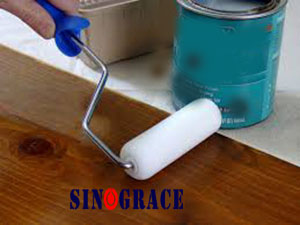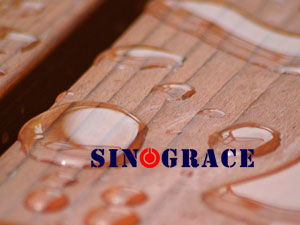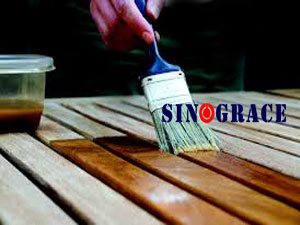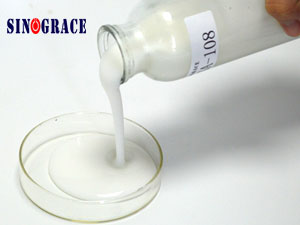2.Substrate treatment - one of the waterborne wood coating process series
The third step in the treatment of water-based paint coated substrates is sealing. The role of the water-based putty is to make the surface of the substrate such as wood not very regular and smooth and minor defects and defects, such as pores, fine cracks, pits, joints and concrete, to reduce the surface roughness and increase the flatness.The requirements for water-based putty are good adhesion and filling, easy sanding, good transparency, and no influence on the coating of the upper layer paint.Water-based putty is mostly one-component. The putty seals the micropores on the surface of the wood to not only increase the fullness of the paint film, but also reduce the bubbles generated during the coating process.This is because the paint liquid will seal the air in the micropores during painting. The slight increase in the ambient temperature during the drying process causes the bubbles to expand, which causes the paint surface to form obvious bubbles. This phenomenon is in the waterborne wood paint application. It is very common.Putty is suitable for thick film coating and paint application. For open painting, that is, the effect of painting wood grain and micropores is required, the putty backing shall not be used. Stir the putty before use.The putty can be applied by brushing or scraping, and the brushing method can be used to adapt to various shapes of the surface. Depending on the surface roughness of the wood, you can brush 1 to 3 putty.The surface of the uneven surface can also be multi-brushed. Under normal circumstances, it can be brushed two times, each interval is at least 0.5h (the second one is dried after the previous one). Do not use excessive force on sanding. Simply polish it to the unevenness and apply a putty.After the putty is finished, put it for at least 2 hours, smooth it with sandpaper (a little better sanding when it is aired), it is best to use 1000# sandpaper water mill to smooth it.However, in the case where water may cause warping, deformation, or opening of wood, water grinding shall not be performed. Rinse the water after grinding, dry it, and dry it before proceeding to the next step.Most water-based putty has a low solid content and is difficult to fill large gaps and pits on wood. It should be treated with high solids putty or oily putty. Generally, water-based paint can also be used for the coating of wood treated with oily putty. It should be noted that the oily putty must be fully dried. If the water-based paint is not fully dried before it is applied, bubbles will be generated and the film may be attached. bad. For doubtful oily putty, it must be tested first, and no problem can be applied to large-scale construction. Sinograce chemical industry co., LTD. Specializes in producing waterborne coatings, waterborne wood lacquer, etc. To learn more, please click here visit us sinograce chemical: https://www.sinogracechem.com Get a Quote Now :sales@sinogracechem.com Telephone :+86 0551 63459511
read more

 English
English français
français русский
русский español
español العربية
العربية








